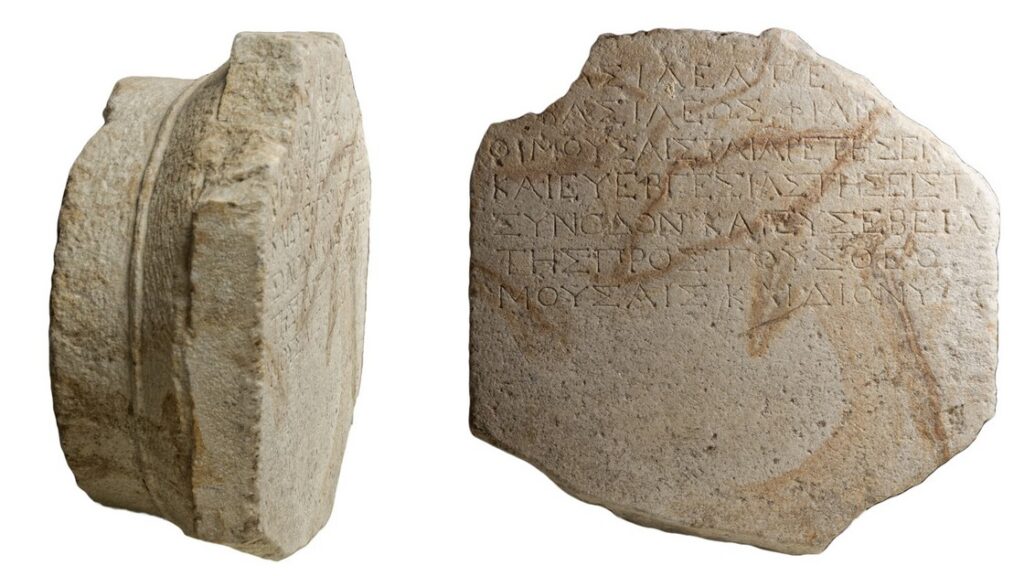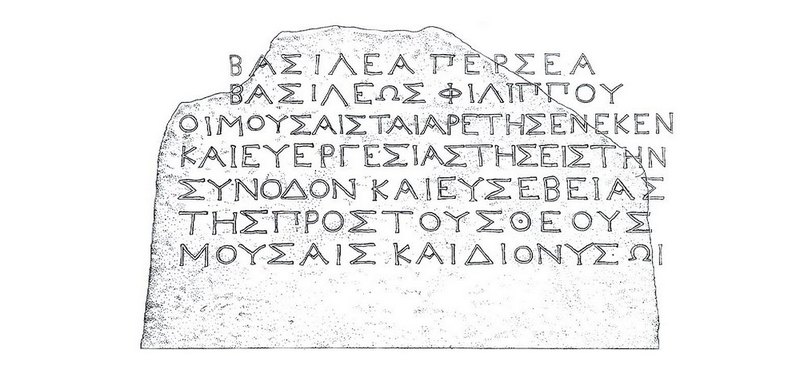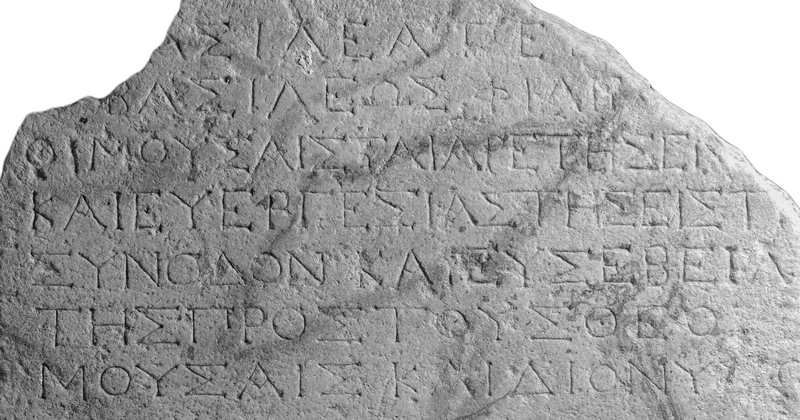A statue of the last Macedonian king Perseus (179-168 BC) was dedicated to the Muses and Dionysus by the “Musaistai”, an association (“synodos”) of organized worshipers of the Muses. The dedication was made to honor the king for his virtue, his benefaction to their association and his piety to the gods, as indicated by the inscription engraved on the pedestal, where the honorary statue stood.

In 168 BC the Macedonian kingdom broke down and the domination of the Romans in the Macedonian area brought radical changes in its political, social and religious life. The statue was removed. On the pedestal, which no longer performed its original role, a Doric capital was eventually carved. We do not know in which building it was used, however it was found in the excavation of a Roman house, where it was probably used as a piece of masonry.
Thus, a piece of marble, initially a pedestal of a king’s statue, then a capital and finally a built-in stone is narrating now, in the Museum of Dion, the history of the city, while its inscription speaks of the glorious past.

First publication: D. Pandermalis, Dion 1999. Μουσαϊσταί-Βασιλεύς Δημήτριος, AEMTH 13, 1999, 415-423 Fig. 1.

